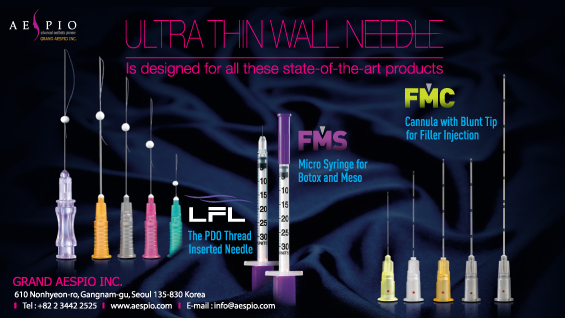▶ Previous Artlcle : AGNES, Treatment of nasal black head and prevention of pigmented lesions Ⅰ
Selective destruction of sebaceous glands with AGNES brings long-term reduction of sebum production, thereby addressing the fundamental causes of black head. I have performed selective destruction of sebaceous glands in the 8 hospital staffs for a total of 5 times with 2~8 weeks of interval. A year after treatment, sebum production was measured with Sebumeter(Figure 2). As a result, sebum production was shown to have reduced by 43% 1 year after treatment(Figure 3).
[Advertisement] ULTRA THIN WALL NEEDLE – Manufacturer: AESPIO(www.aespio.com)

Figure 2. Sebumeter.

Figure 3. Changes in sebum production.
However, black head removal with AGNES sometimes results in formation of pigmented lesions. AGNES uses insulation coating to prevent epidermal burn but why do the pigmented lesions occur? The answer lies in the follicle density.
When treating acne, individual lesions are at least 5mm apart, and the heat energy does not accumulate in the dermis to damage the epidermis. However, follicles are more densely distributed than acne lesions. Despite the selective nature of the treatment, repeated treatment of adjacent follicles may overheat the dermis and cause first degree epidermal burn which leads to pigmented lesions. Therefore, repeated treatment of adjacent follicles should be avoided in treatment of nasal black head.
For these reasons, I skip 2-3 follicles at a time and return to skipped follicles after treating the other side of the nose. In other words, I treat from the left to right or right to left side of the nose and repeat for about 3 times. Simultaneous cooling with an ice pack reduces pain and prevents hyperpigmentation.
Five procedures performed over 4 week intervals drastically reduces black heads as well as sebum production. An added benefit seen in many cases is that the tip of the nose seems more defined after the procedure. This may be due to the total volume reduction of nasal sebaceous glands.
-The end-





















